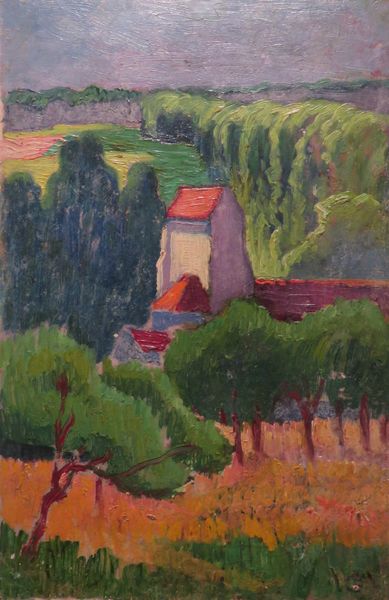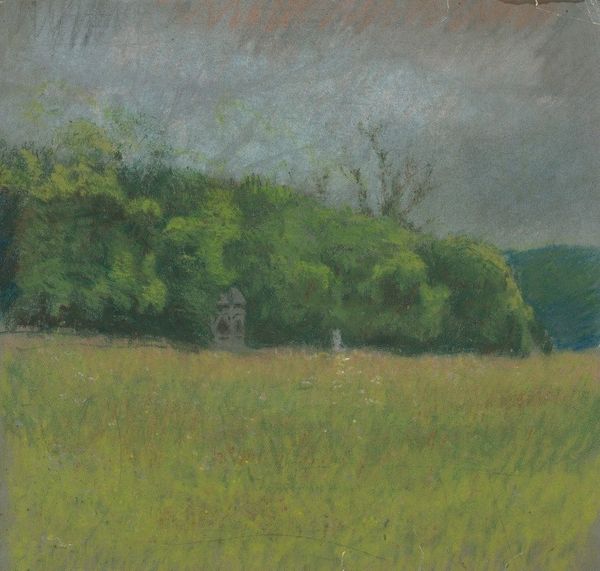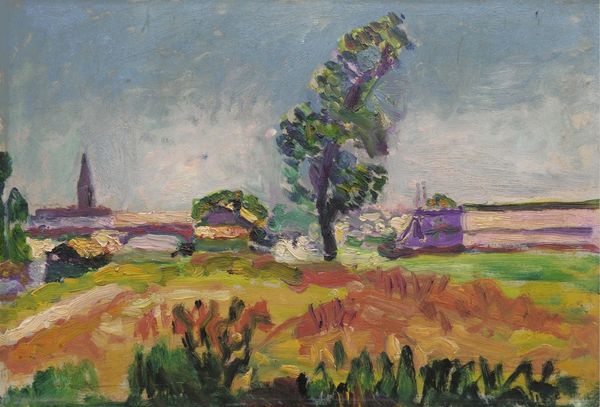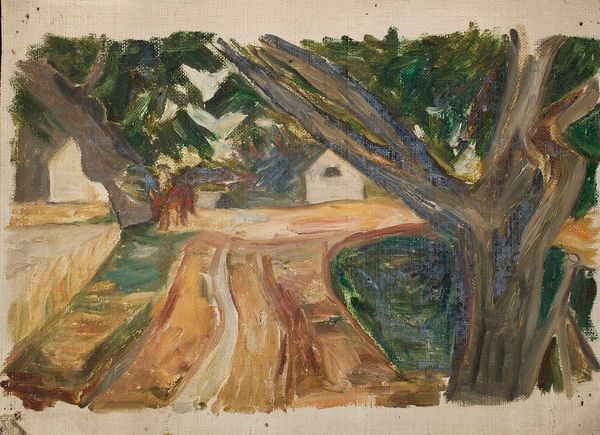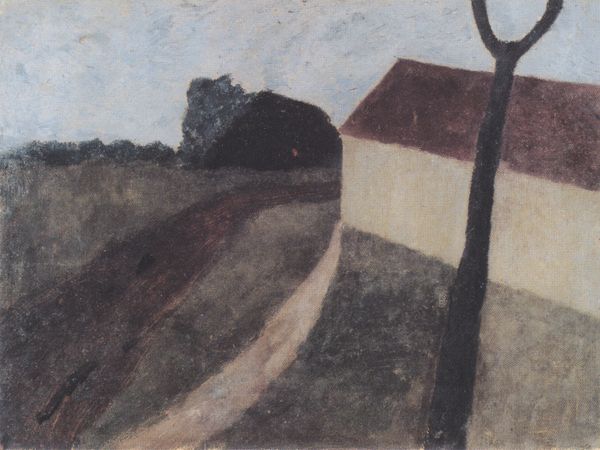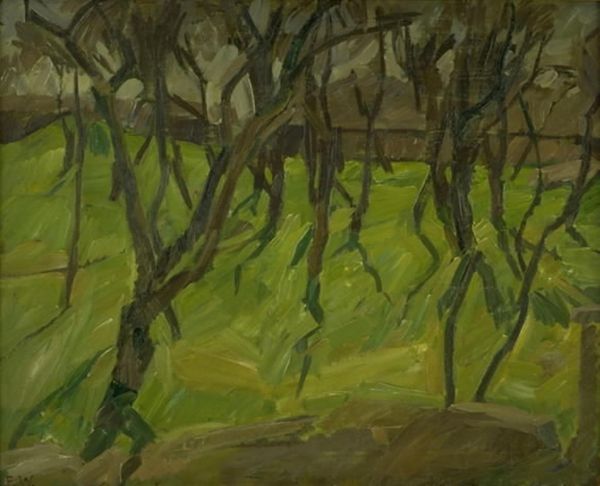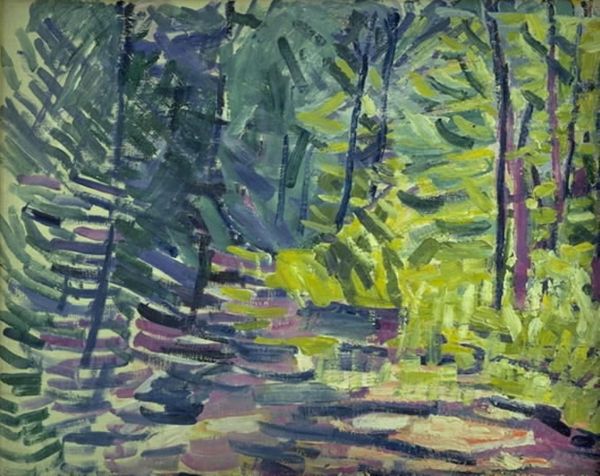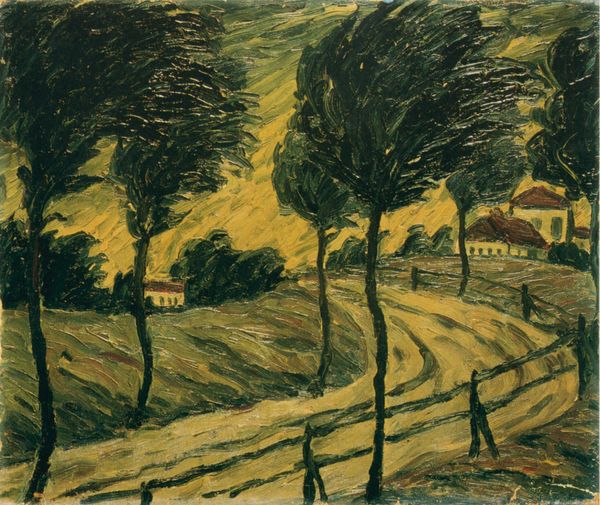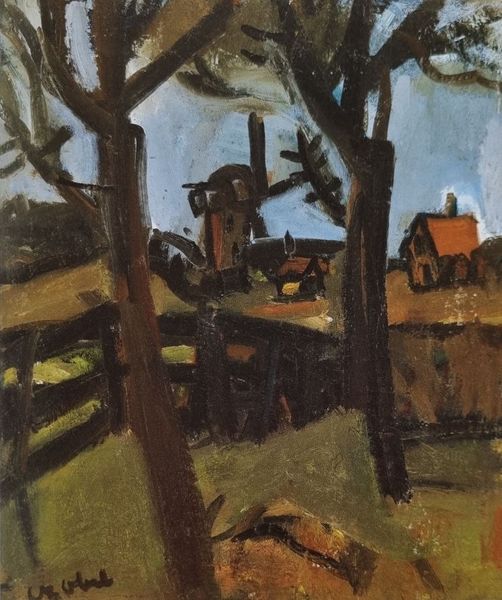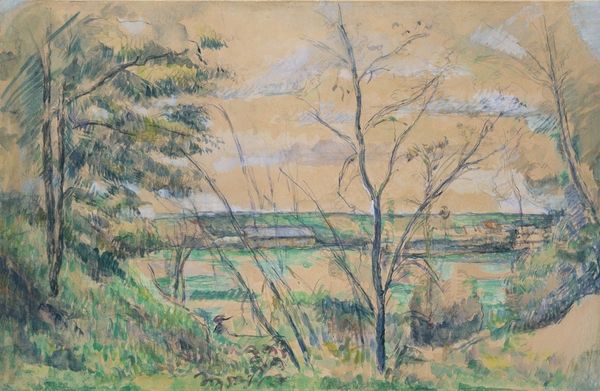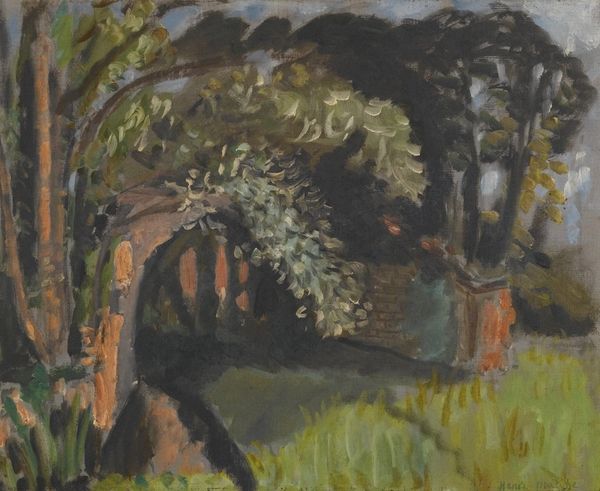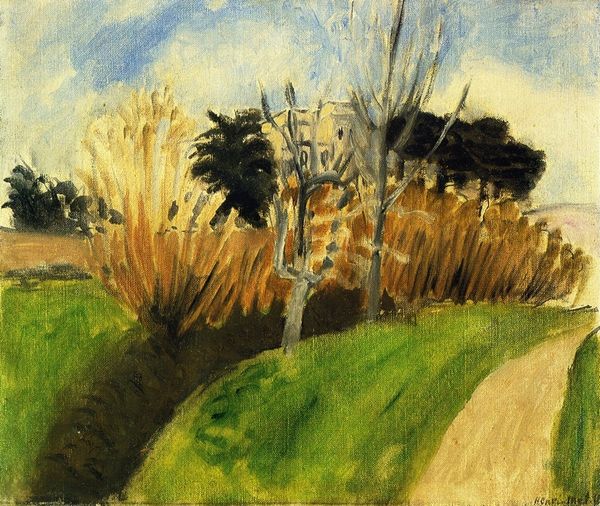
painting, plein-air, oil-paint, impasto
#
tree
#
rough brush stroke
#
painting
#
plein-air
#
oil-paint
#
landscape
#
german-expressionism
#
house
#
impasto
#
plant
#
expressionism
#
painting painterly
#
genre-painting
#
building
Copyright: Public domain
Curator: Before us is Paula Modersohn-Becker's "Worpsweder Landscape with Red House," painted around 1900. It exemplifies her early experimentation with color and form. Editor: There’s a raw energy to this. That bold red house amidst the muted greens and grays creates such a powerful focal point. The thick impasto seems almost tactile. Curator: Indeed. The visible brushstrokes, applied en plein air, were quite radical for the time. Modersohn-Becker was deeply influenced by the rural surroundings of Worpswede, but her depiction goes beyond mere representation. Think about the peasant art of the region and how this aesthetic emerged in that environment. Editor: Absolutely. The visible materiality really directs our eye, and it seems to push towards expressionism. See how the tree, rather than being delicately rendered, becomes almost an abstract form? And the relationship of the scale of the house in the background feels so flattened by comparison. Curator: That's characteristic of early German Expressionism. But consider also how the peasant experience is often aestheticized by art markets in ways that elide class difference or economic forces at work on artistic labor and output. What meanings emerge when the work leaves its community context for larger distribution? Editor: That point also gets me thinking of how Modersohn-Becker simplifies the forms to their essence and draws our eyes to the underlying architecture of shape. What I find intriguing is how the subdued palette allows that bright house to almost jump out and destabilize the overall field. Curator: Her manipulation of color to convey emotion rather than realistic depiction suggests the influence of Van Gogh. And how she engages with what she could learn about avant-garde aesthetic traditions like Impressionism. The making of art during her short life can itself be seen as an indictment of the limited roles prescribed for women artists at the turn of the century. Editor: Thinking about those brushstrokes now, it is so gestural, and, when combined with this intense but limited color palette, feels as though she were wrestling with seeing beyond conventions. Curator: Exactly. This wasn't just about recording a landscape; it was about forging a new visual language, a new way of representing the relationship between people, the land, and artistic vision. Editor: Ultimately, though, that striking red and simplified composition is what grabs me. Such a distinctive method of visual organization.
Comments
No comments
Be the first to comment and join the conversation on the ultimate creative platform.
